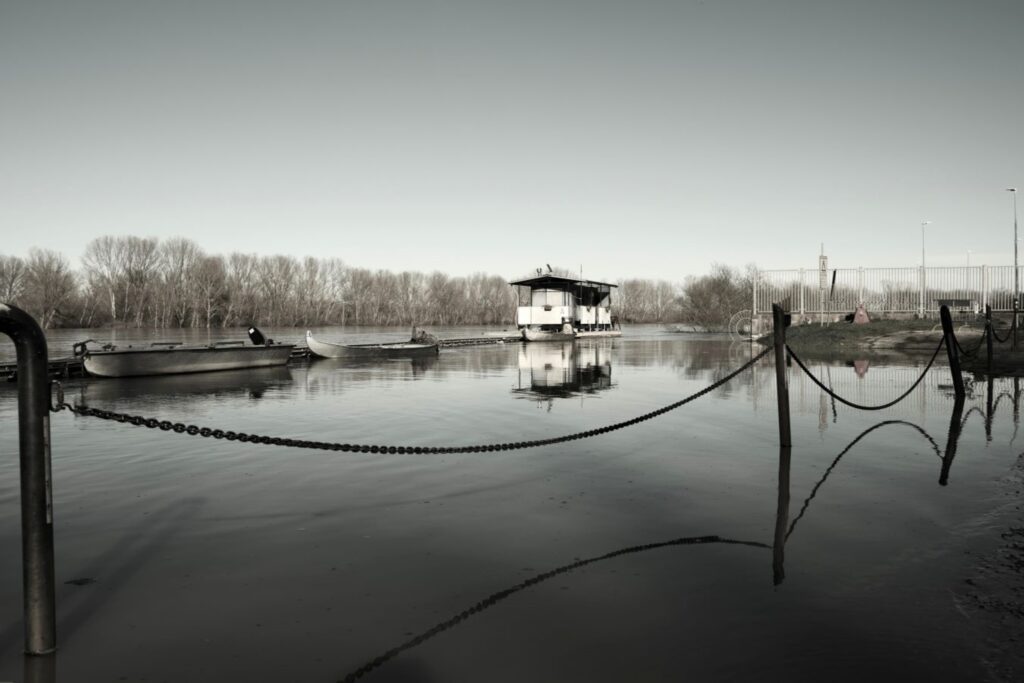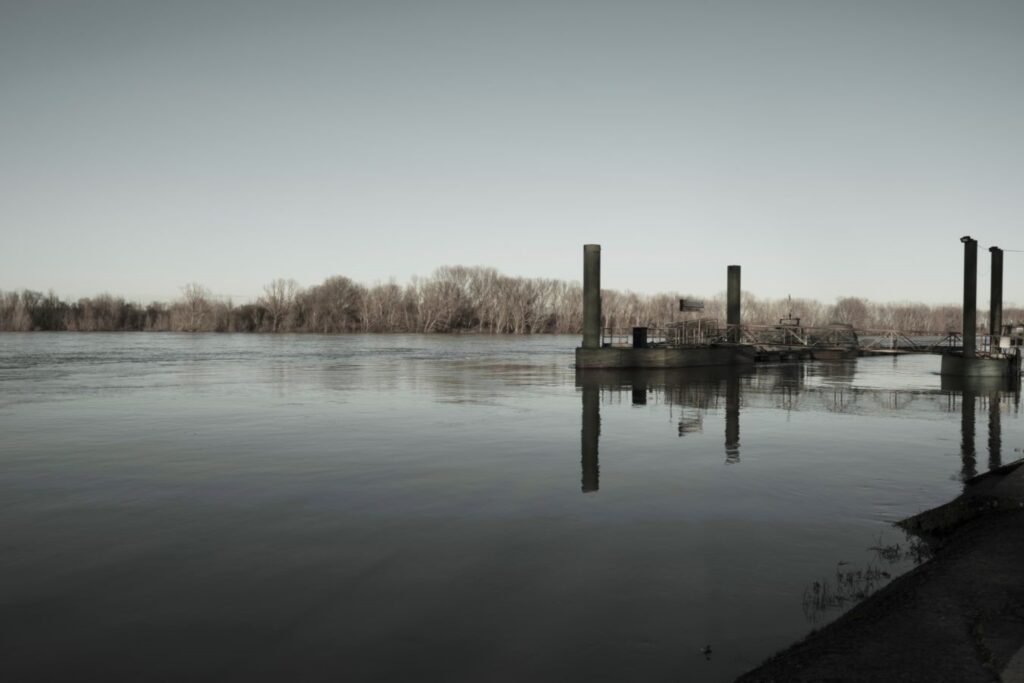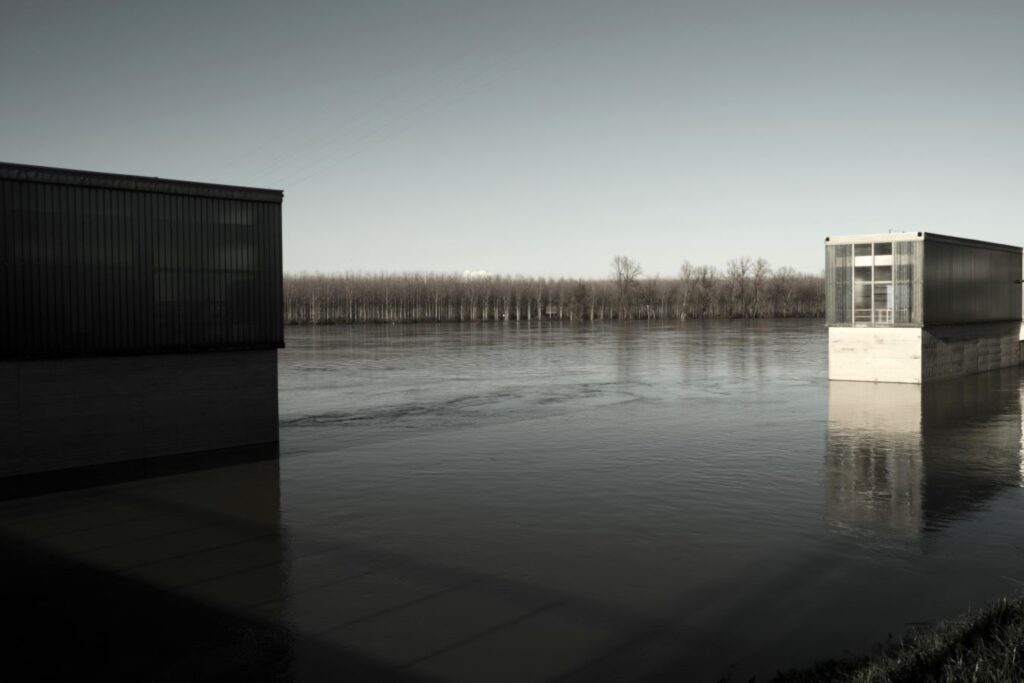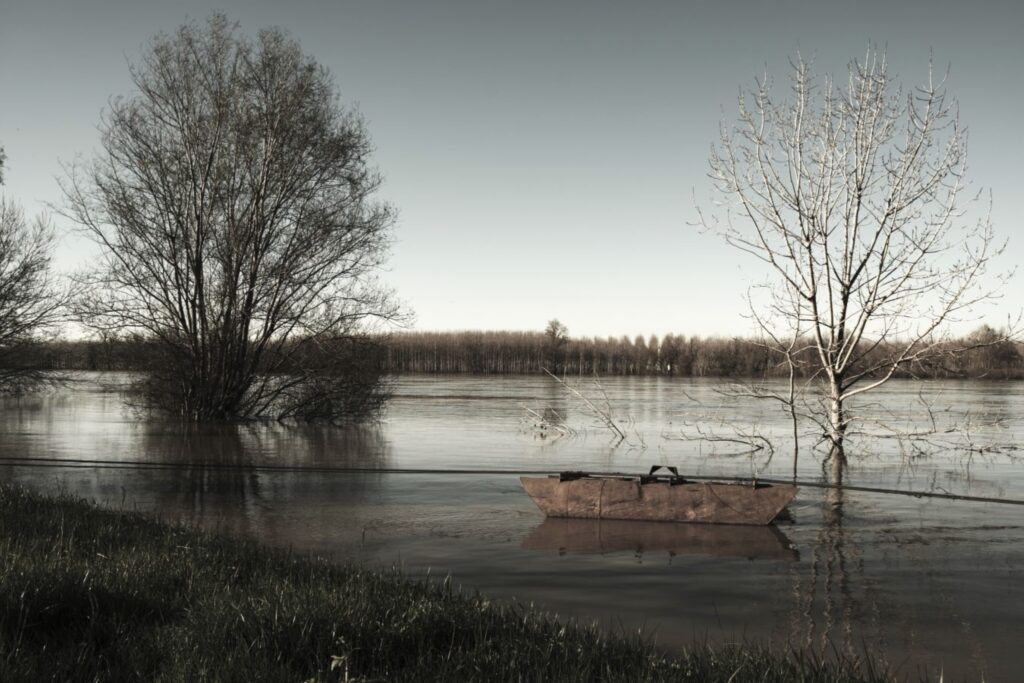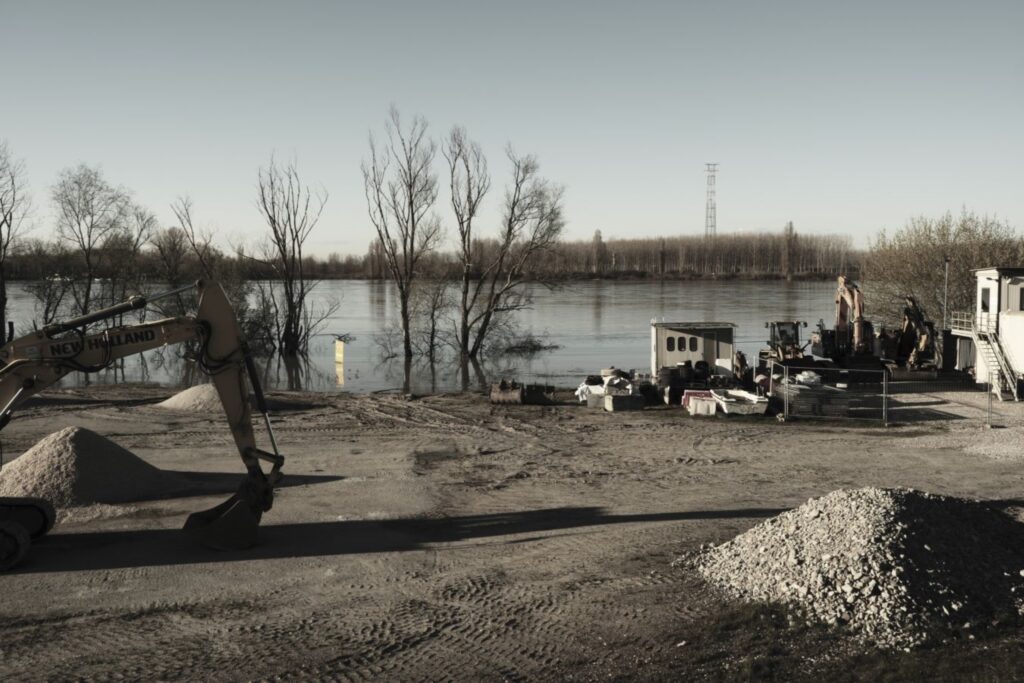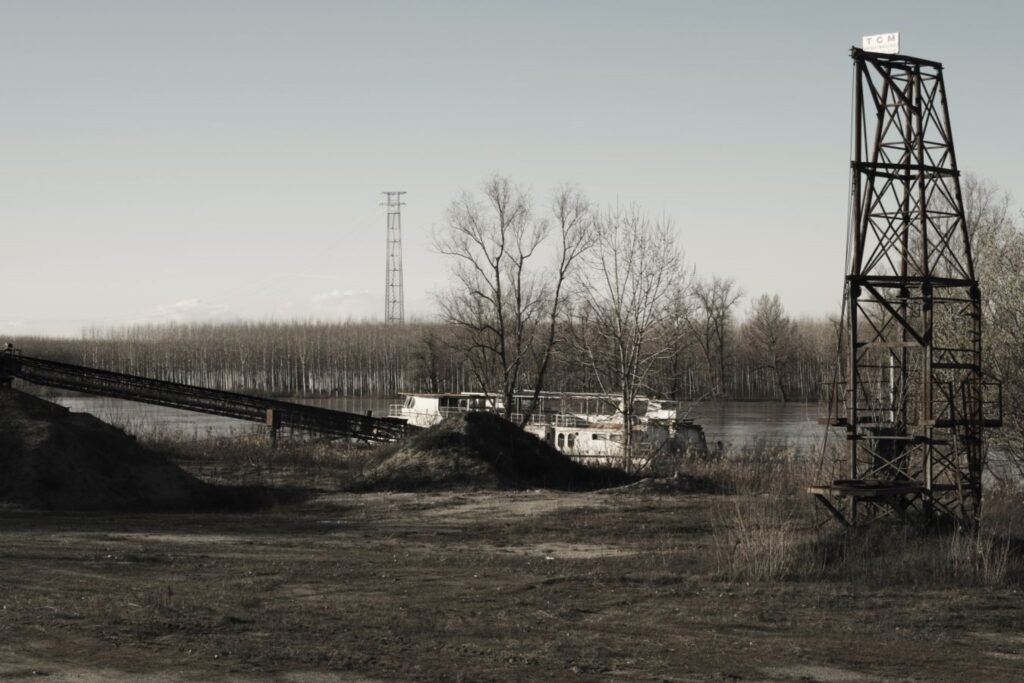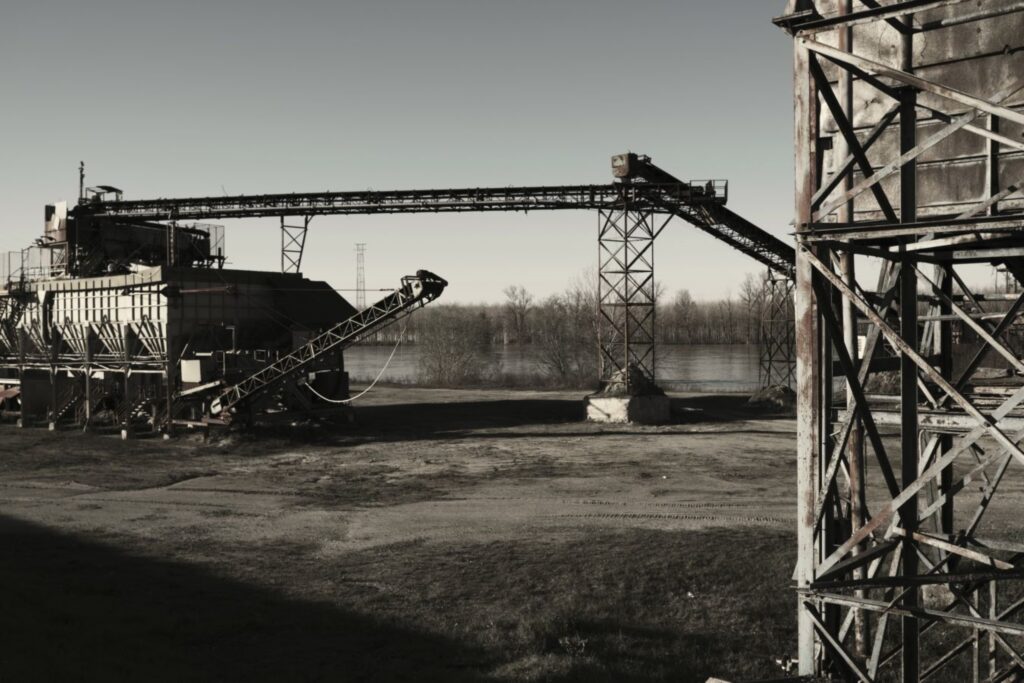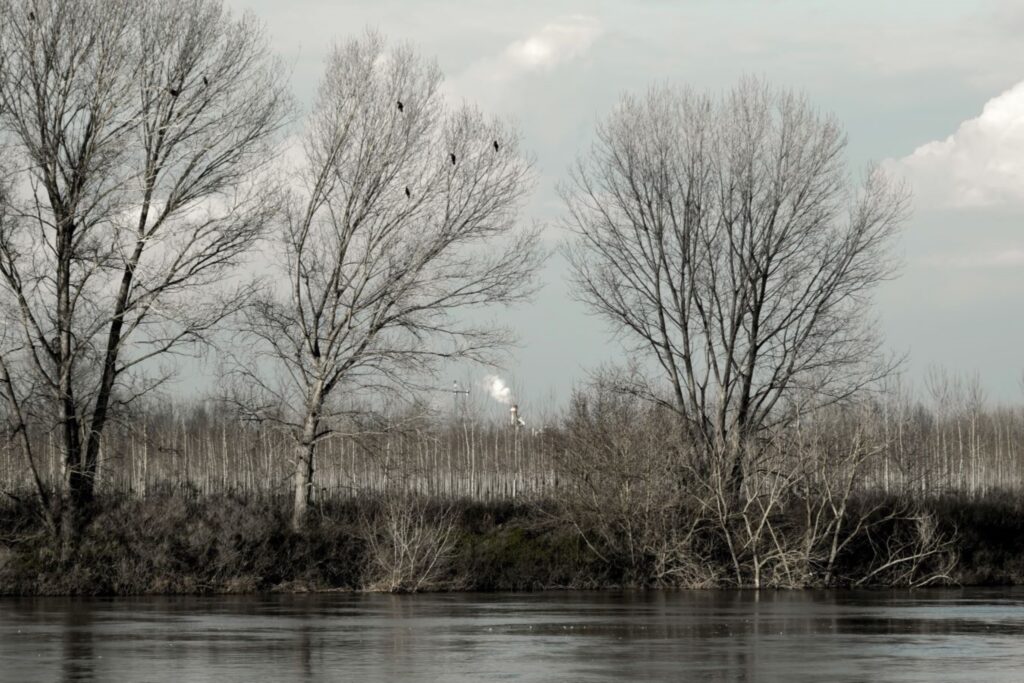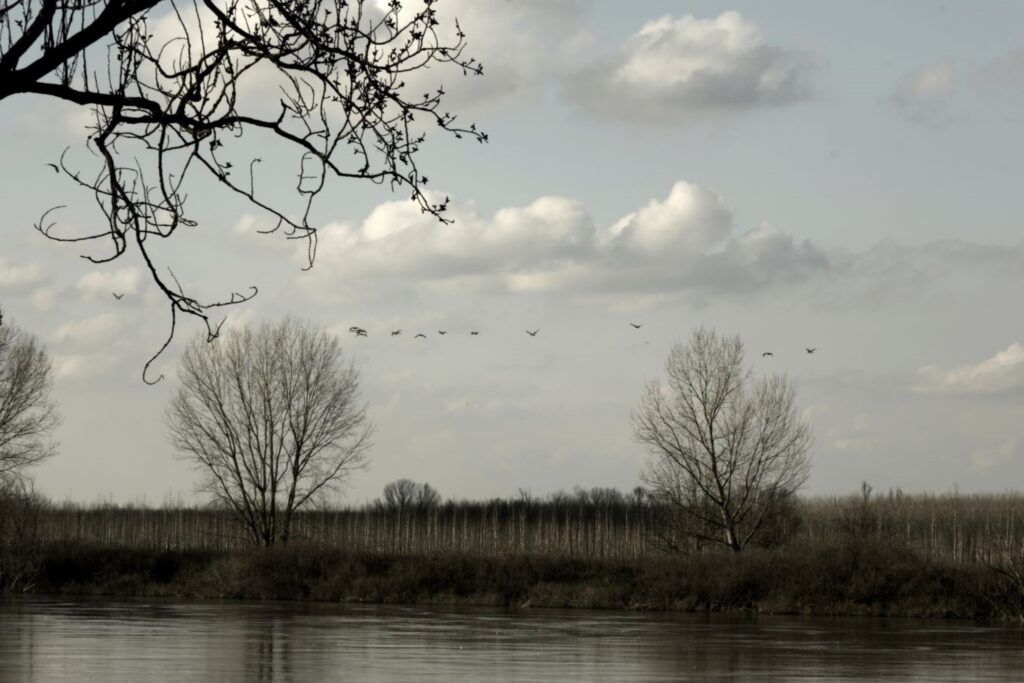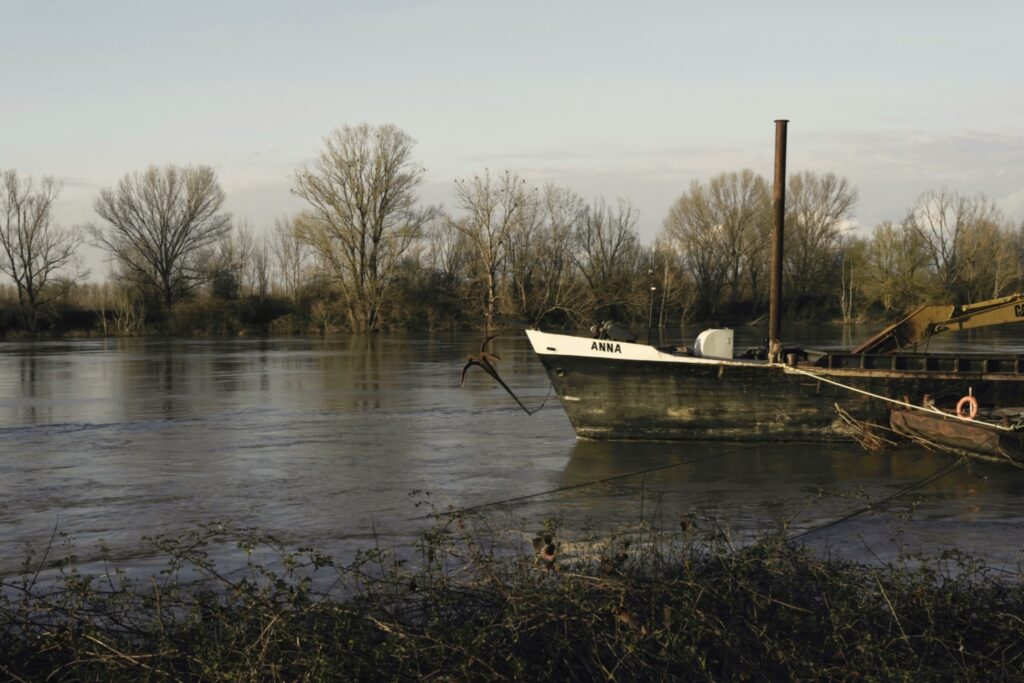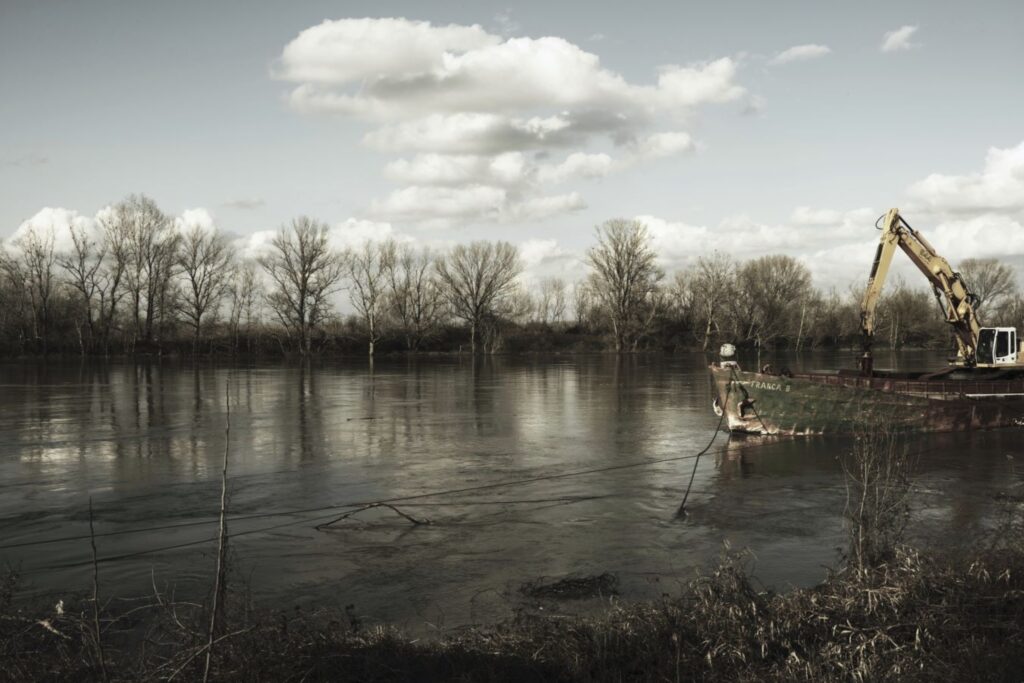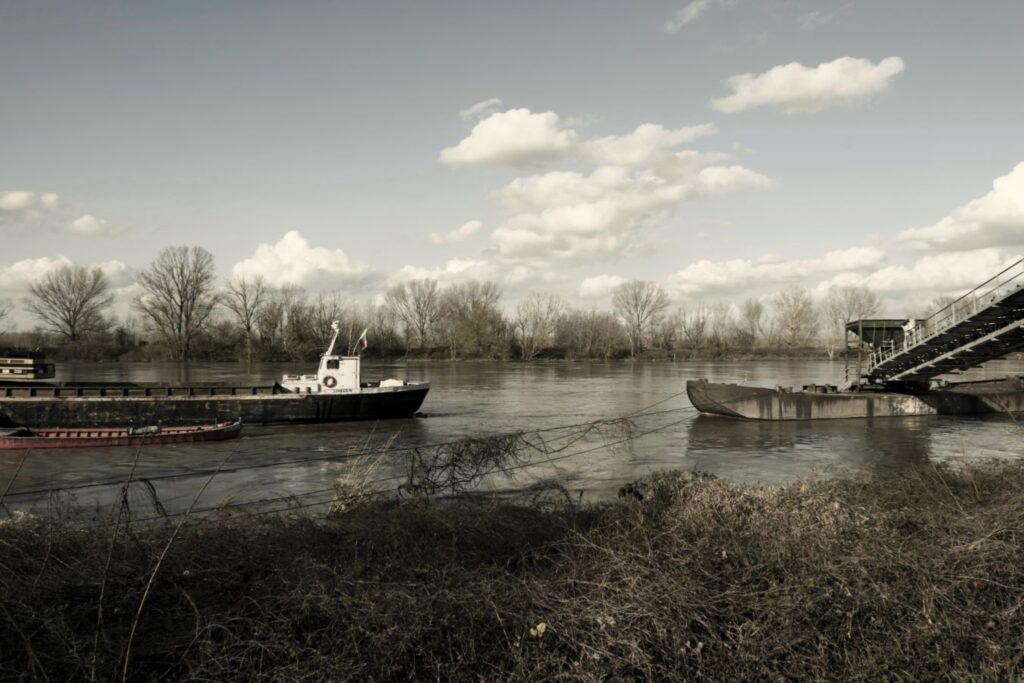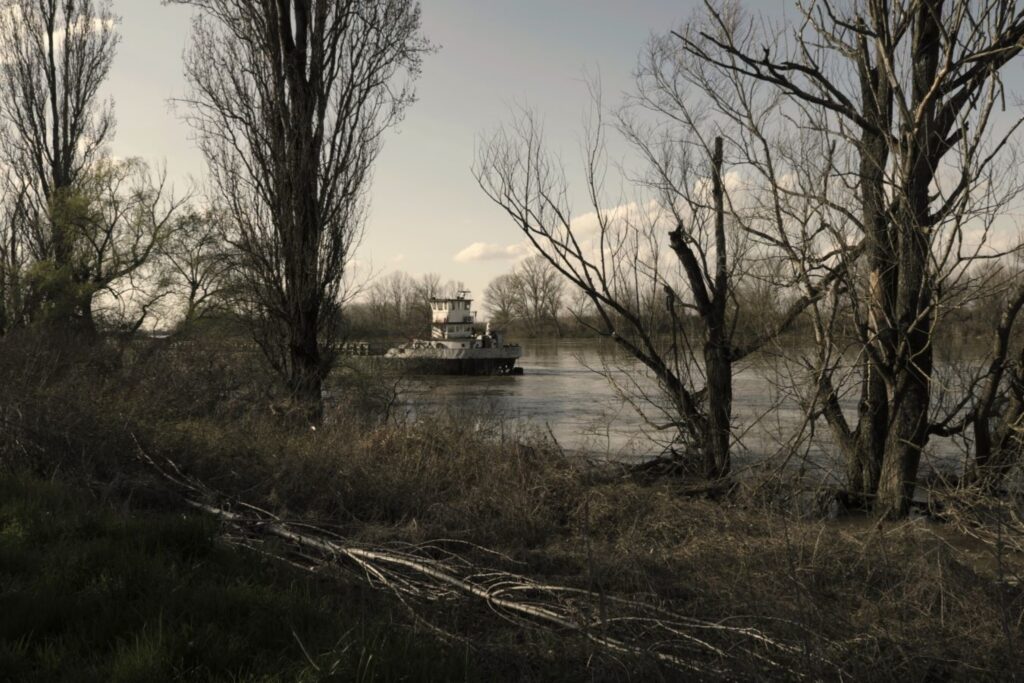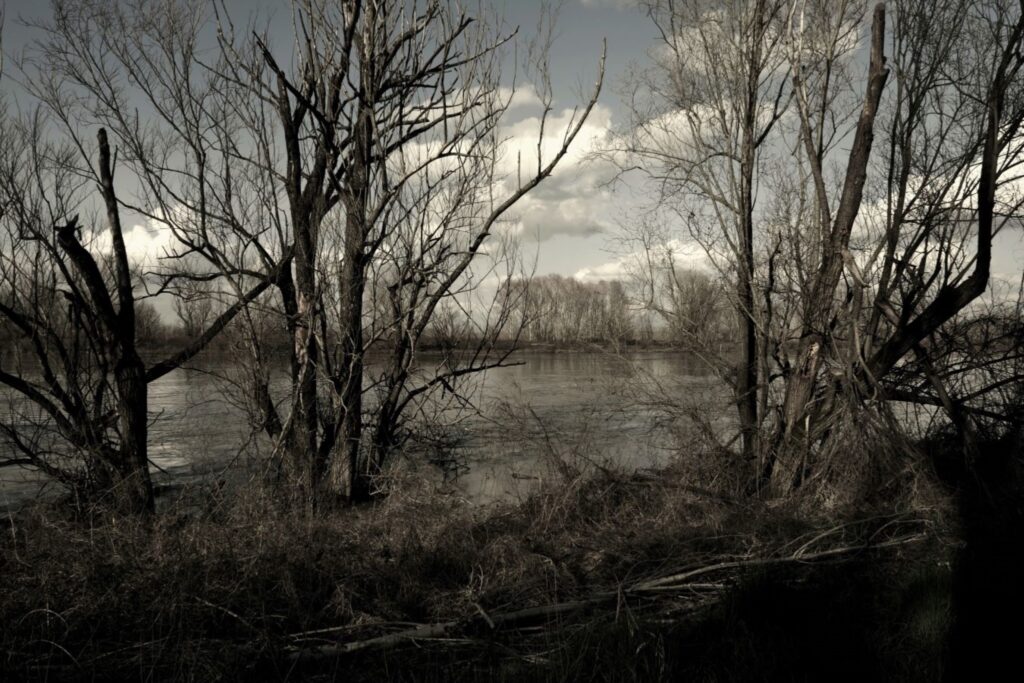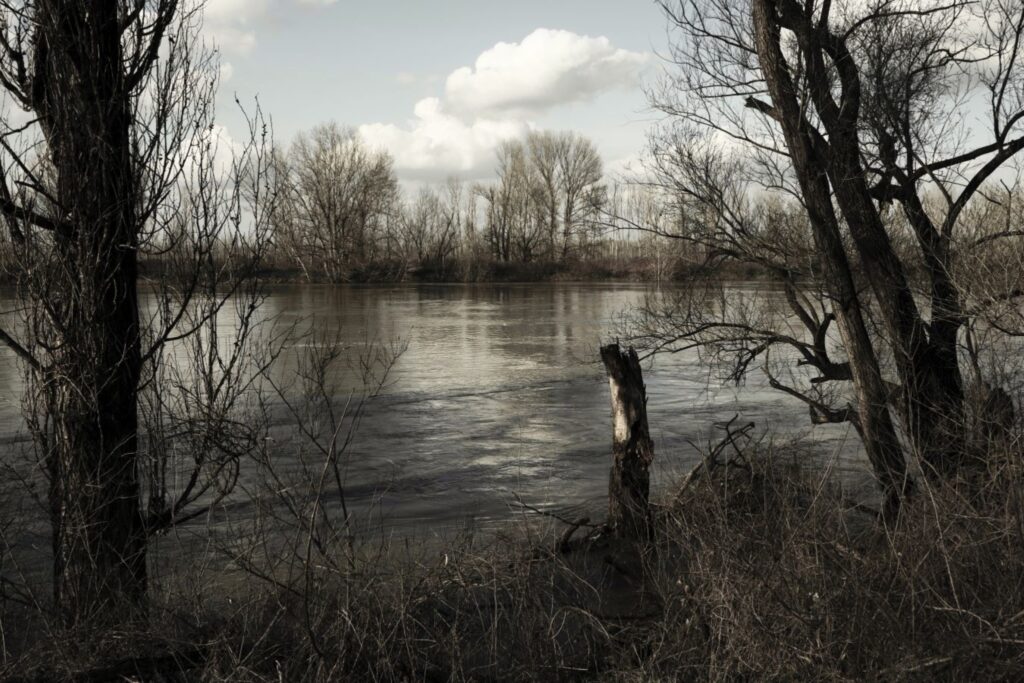I am originally from the Emilia Romagna region, whose northern border is delimited by the Po – known in Roman times as the Eridano – the widest and longest of Italy’s rivers. A fascinating river, the Po is the soul and lifeblood of the fertile valley that stretches from west to east across northern Italy, one of Europe’s most important industrial and agricultural areas.
I have never lived near the river and do not often visit it. Recently I had the opportunity to spend a few hours on its banks in Boretto, at a time when it was threatening to flood the surrounding areas.
The last time I had crossed it was in the summer of 2022, the year of the worst drought the river had experienced in two centuries. At that time I was assailed by a deep sense of anguish and anxiety that went far beyond the knowledge of the terrible consequences the drought was having on the environment and the country’s economy. Eridano was dying. Seeing it now so full of water was a relief, but a relief veiled with melancholy for the known vulnerability of a river scarred by intense human activity and the effects of climate change.
